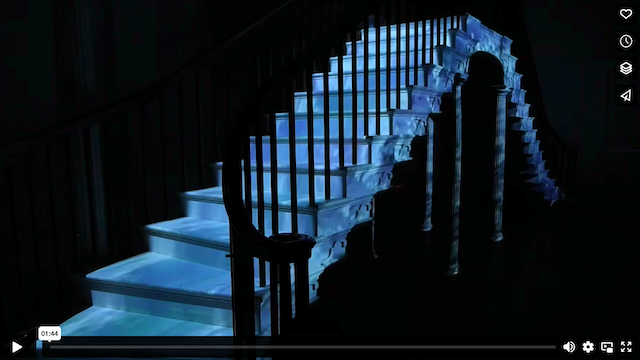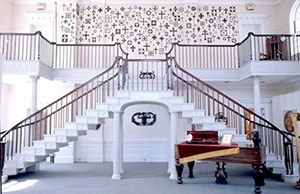video installations




(To flow together)
Three-channel, site-specific, video installation
1792 Bulfinch Staircase, Somerville Museum
Approx. 7 ft x 33 ft x 4 ft
Continuous loop (silent)
2022

Confluere
Confluere (installation view), Somerville Museum, 2022
Exhibit info: WATERLINES, Somerville Museum, December 15, 2022 - March 22, 2023
Press:
"Ripple Effects: Diving into “Waterlines” at the Somerville Museum,"
Jacqueline Houton, Boston Art Review, March 13, 2023
"'Waterlines' At Somerville Museum Mulls Our Relationship With Water,"
Greg Cook, Wonderland, Jan 24, 2023 (images and video)
"Waterlines: Stories of Ebb and Flow," Cate McQuaid, Arts, The Ticket,
Boston Globe, Jan 19, 2023
Confluere • Latin: To flow together
con- ("with; together") + fluō ("flow")
Confluere is a three-channel, site-specific, video installation inspired by, and designed, for the two-hundred-thirty year old Bulfinch “flying double staircase” and the land historically inhabited by the Pawtucket confederation of Algonquin-speaking tribes, including the Massachusetts. 1
This installation aims to create a visual environment in which global tidal waters / the past and the present / and the distant and the local / flow together and apart / divided and rejoined / by the architectural form.
All footage filmed by Georgie Friedman:
Pacific Ocean
South of Pu‘U ‘Ō‘Ō Volcano, Hawai'i
Kennebec River
North of Bath, Maine
This piece is dedicated to the memory of George Fifield, great friend and curator, as he flows beyond this known world.
click to enlarge:

Confluere installation views, 2022


1 Charles Bulfinch (born 1763, Province of Massachusetts Bay, a British Colony), who is regarded by many as the first American-born [of European-descent], professional architect, designed the “flying double staircase” (1792) as part of his commission for the new Charlestown house for shipping merchant, Joseph Barrell. It was relocated to the Somerville Museum for historic preservation.
Prior to colonization, the Massachusetts people did not live in settled communities, but migrated seasonally, in bands, throughout their territories. The Massachusetts do not exist in any organized band, tribe, or nation today, but many Wampanoag and Nipmuc tribal descendants claim Massachusetts ancestry. Native Americans have lived throughout what is currently known as Massachusetts and Rhode Island for over 12,000 years.
Image from: https://www.thesomervilletimes.com/archives/105465


all images, video, and other content © georgie friedman unless otherwise noted